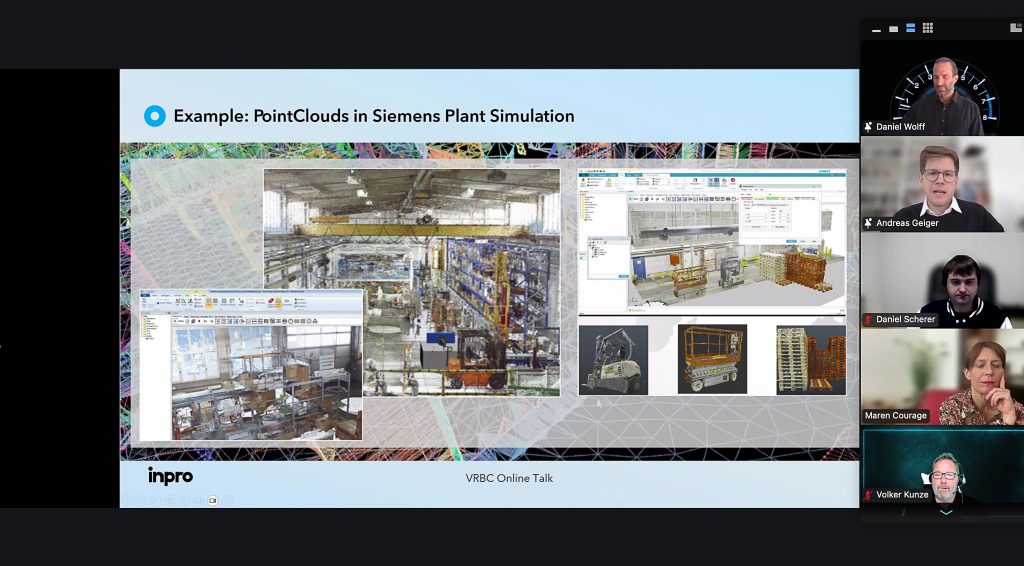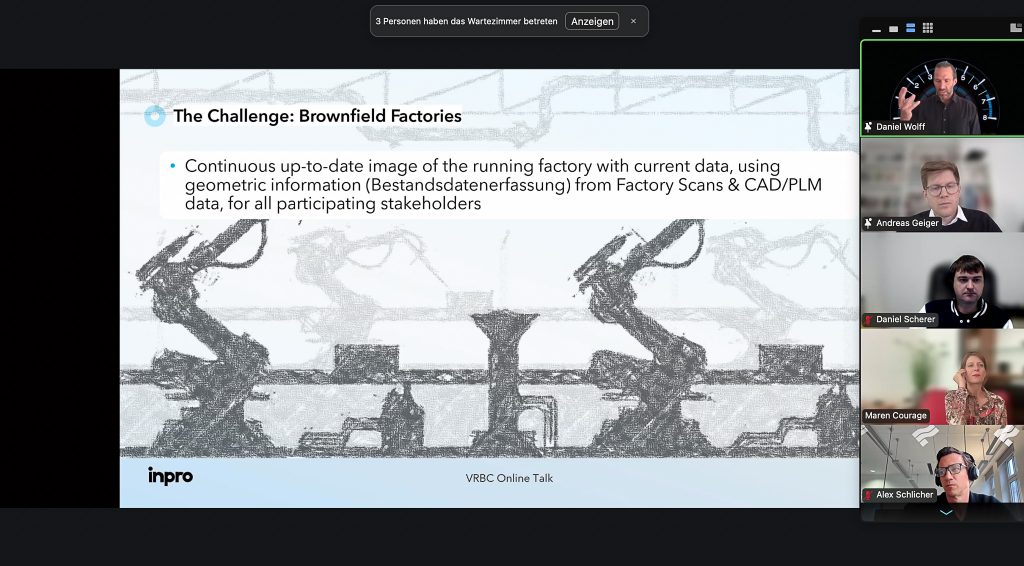Review of the online event: Digital twins & metaverse – how Inpro is rethinking the factory of the future
Review of the online event: Digital twins & metaverse – how Inpro is rethinking the factory of the futureWhat does the factory of the future look like? If Inpro has its way, it will be digital, networked – and ready for the metaverse. In an inspiring online talk, Daniel Wolff (Head of Collaborative Incubation) and Dr. Andreas Geiger (Head of Transfer and Innovation) presented their vision of the digital factory – a project that is being driven forward by Volkswagen and Siemens.
The centerpiece was a presentation on the future of the digital factory and its interface to the industrial metaverse. The focus was on one topic in particular: a continuously updated digital image of the real factory – in other words, a digital twin that not only provides still images but also keeps pace with reality.
Two key technologies were presented:
🌀 Pointo, a software that converts 3D scans of real factories into manageable point clouds – the first step towards a digital twin.
⚙️ Juno, a solution for integrating CAD data into Unity and other real-time engines – for immersive visualization and planning in real time.
In addition to specific use cases such as collision detection, inventory through object recognition or virtual collaboration, the focus was also on the big picture: linking metaverse technology with artificial intelligence. Inpro is working specifically on interfaces for Volkswagen and Siemens in order to solve real problems with digital means – open to new technologies and collaborations.
The talk was honest, visionary and practical at the same time. Instead of hype, there was reality: challenges such as data quality, synchronization of engineering and operating data and economic feasibility were clearly stated. And there was also a clear stance on the role of AI: it should not replace humans, but support them – as an intelligent assistant in an increasingly complex planning world.
Conclusion: Inpro thinks of the digital factory not as a promise for the future, but as a concrete reality – agile, application-oriented and open to innovation.





